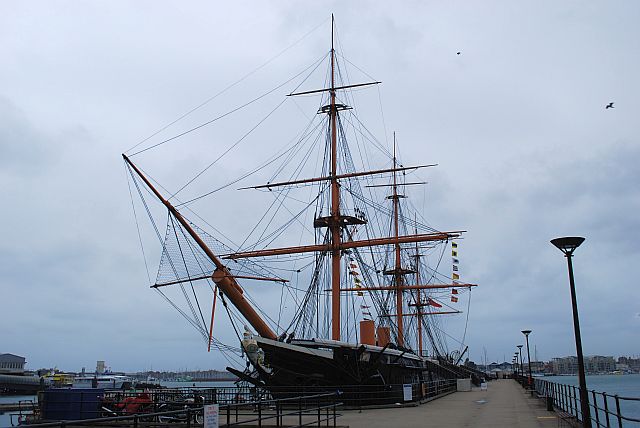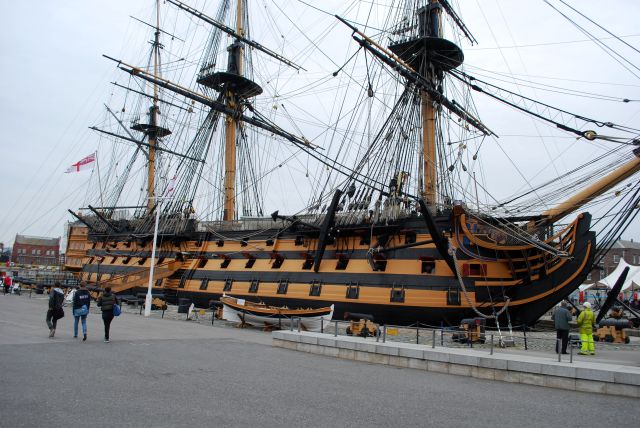By Richard Kauffmann
The HMS Warrior is a ship we had the opportunity to see fairly recently in Portsmouth, on our Abingdon exchange. On Friday 10th October 2009, the German group set out on a trip to Portsmouth, one of England’s most famous, most important and most historical naval cities.
 The HMS Warrior was ordered in the year 1859. This ship, which is still worth £170, 000, was built for the United Kingdom’s Royal Navy and is still their official property, although it’s currently used as a museum ship. What is so special about the HMS Warrior is that this flagship was the first iron-hulled and iron-armoured warship of the Royal Navy and also almost in the whole world. Once it had been completed, which was in the year 1861, it could easily be called one of the most revolutionary ships of its kind at that certain point of time. It was indeed by far the largest, by far the fastest and by far the most heavily-armed and most heavily armoured flagship the world had seen. Another point is that – in contrast to what many people nowadays think – the HMS Warrior was not built using ANY radically modern technology, but for the first time it combined steam engines, loading guns, iron construction, iron armour and propeller drive in one revolutionary warship.
The HMS Warrior was ordered in the year 1859. This ship, which is still worth £170, 000, was built for the United Kingdom’s Royal Navy and is still their official property, although it’s currently used as a museum ship. What is so special about the HMS Warrior is that this flagship was the first iron-hulled and iron-armoured warship of the Royal Navy and also almost in the whole world. Once it had been completed, which was in the year 1861, it could easily be called one of the most revolutionary ships of its kind at that certain point of time. It was indeed by far the largest, by far the fastest and by far the most heavily-armed and most heavily armoured flagship the world had seen. Another point is that – in contrast to what many people nowadays think – the HMS Warrior was not built using ANY radically modern technology, but for the first time it combined steam engines, loading guns, iron construction, iron armour and propeller drive in one revolutionary warship.
 The HMS Victory, which we could also see and explore on our day spent in Portsmouth, is another great and maybe historically even more important flagship than the HMS Warrior is. This flagship is the property of the Royal Navy and was therefore used in the historical and important Battle of Trafalgar. It was the official flagship used by one of England’s most famous admirals – Admiral Nelson.
The HMS Victory, which we could also see and explore on our day spent in Portsmouth, is another great and maybe historically even more important flagship than the HMS Warrior is. This flagship is the property of the Royal Navy and was therefore used in the historical and important Battle of Trafalgar. It was the official flagship used by one of England’s most famous admirals – Admiral Nelson.
The HMS Victory, which was ordered in 1758 and launched in 1765, is also one of the most highly developed flagships of its time. Considering that the other ships that took part in the Battle of Trafalgar looked really good, Nelson’s personal flagship beat them all in the aspects of functionality, beauty and design. Seeing what the ship is constructed like in the back part, you can easily guess that this was the spot where Nelson lived himself at the time of the battle. Once you have taken a look inside, you will be even more impressed. The furniture is carefully selected, the design is really beautiful.
This ship was also the place where Admiral Nelson, whose statue can still be seen in famous Trafalgar Square in London nowadays, died. A couple of moments before his death, though, the crew told him that the battle had been won, which was true. Therefore Nelson died with a feeling of success.
